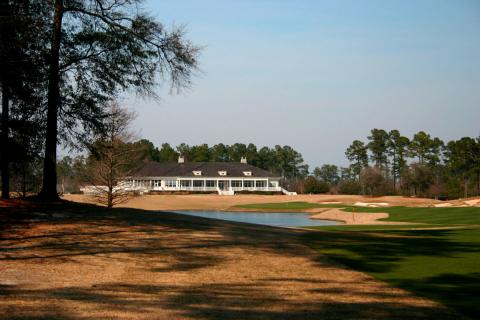Tidewater Golf Club is not exactly Pebble Beach, but at least one golf writer has described it as such. In its heyday, the Little River, SC, course was ranked in the top five along the Grand Strand of Myrtle Beach and among the top 25 in the golf rich state. Tidewater may have fallen back a little in terms of reputation but its water holes and impressive marshland views still merit elite status among the Strand's 100+ courses. And by the end of the summer, the course, which closed for renovations in June, should be restored to its former glory.
With that kind of pedigree, you would think the cost of a home along the fairways at Tidewater would run well into six figures. But
With the collapse of the housing market, especially the second-home market, such bargains abound along the Strand. Beside the True Blue Golf Club in Pawleys Island, two bedroom and two bath condos begin under $125,000. At that price, you could reserve a few dollars to pay the green fees at the wondrous Caledonia Golf Club across the street, or at True Blue, where the fees are only slightly lower. (Note: One of the special things about Caledonia is that there are no homes along its fairways, a rare condition in Myrtle Beach golf.) Nearby, condos in the gated Pawleys Plantation, with its Jack Nicklaus golf course and impressive marsh views, are a little pricier. Homes in the section known as Weehawka Woods, which is a favorite of those who like to use their condo two weeks a year and rent it out the rest of the time, start at $149,000. Pawleys Plantation management charges a fee of about 40% to rent out and maintain the condos for their owners; that is fairly typical of such arrangements up and down the Grand Strand.
At the moment, Myrtle Beach has more golf courses than vacation traffic and local play can fully support. That means there is plenty of competition among the courses for the precious golfers' dollars. The price of a round of golf along the Strand has not been lower for decades, and $39 (cart included) is no longer an exception. At that kind of price, and the low price of condos, golfers in love with variety can have their pick of low-priced homes and golf courses along the 90 mile stretch of the Grand Strand.
If you think the time may be right for you, let me know your price range and other criteria, and I will suggest a few possibilities. As always, I do not charge for my services.

Green fees may be a little steep at True Blue Golf Club in Pawleys Island, SC, but condos are sharply priced, beginning at $125,000 for a 2 BR, 2 BA unit. Photo by Elliot deBear.























